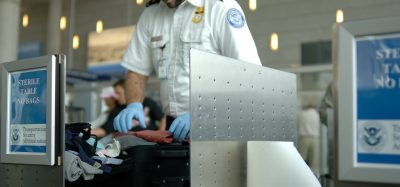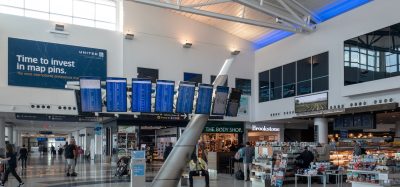The pilots’ role in the safety chain
- Like
- Digg
- Del
- Tumblr
- VKontakte
- Buffer
- Love This
- Odnoklassniki
- Meneame
- Blogger
- Amazon
- Yahoo Mail
- Gmail
- AOL
- Newsvine
- HackerNews
- Evernote
- MySpace
- Mail.ru
- Viadeo
- Line
- Comments
- Yummly
- SMS
- Viber
- Telegram
- Subscribe
- Skype
- Facebook Messenger
- Kakao
- LiveJournal
- Yammer
- Edgar
- Fintel
- Mix
- Instapaper
- Copy Link
Posted: 29 March 2012 | Jim McAuslan, General Secretary of the British Airline Pilots’ Association (BALPA) | No comments yet
The safe operation of airports, of aviation generally, relies on many factors. As has been said before, you only need one link in the safety chain to fail to bring about potential disaster in this potentially dangerous business.
Pilots play one of the most vital parts in that safety chain, not least because they are the ultimate arbiters of safety and are entrusted to take the crucial decisions to ensure that passengers get to their destinations safely. But pilots’ ability to fly safely is currently under threat by way of new pilot fatigue proposals which will undoubtedly reduce safety standards here in the UK.
The European Aviation Safety Agency (EASA) was tasked with constructing new pan-European flight time limitations (FTLs) which will replace weak regulations in some EU countries, but which will also replace the high standards we enjoy in Britain. Our UK rules, while far from perfect, are seen by many as the gold standard in Europe, and have resulted in our having one of the best air safety records in the world.
The safe operation of airports, of aviation generally, relies on many factors. As has been said before, you only need one link in the safety chain to fail to bring about potential disaster in this potentially dangerous business.
Pilots play one of the most vital parts in that safety chain, not least because they are the ultimate arbiters of safety and are entrusted to take the crucial decisions to ensure that passengers get to their destinations safely. But pilots’ ability to fly safely is currently under threat by way of new pilot fatigue proposals which will undoubtedly reduce safety standards here in the UK.
The European Aviation Safety Agency (EASA) was tasked with constructing new pan-European flight time limitations (FTLs) which will replace weak regulations in some EU countries, but which will also replace the high standards we enjoy in Britain. Our UK rules, while far from perfect, are seen by many as the gold standard in Europe, and have resulted in our having one of the best air safety records in the world.
The latest iteration of EASA’s proposals are flawed from beginning to end because, contrary to the mandate of the rule-making group, they have thoroughly ignored the science. For instance, because pilots could be on airport standby for four hours before their duty starts to clock up, they could, in the worst case, end up landing their aircraft after being awake for a full 22 hours.
Currently in the UK, following scientific advice, pilots can only work two early starts in a row. But the new proposals could see pilots doing up to seven very early morning reports in one go.
And while very-long-haul flights such as to the West Coast of the USA currently need to carry one relief crew member so that all can get some rest in flight and be refreshed and prepared for the landing, the new proposals would remove that limitation.
Meanwhile, in the US, the Federal Aviation Administration (FAA) has been going in the opposite direction. The Colgan Air accident in Buffalo, NY, three years ago, which was caused partly by pilot fatigue, brought home the need to toughen up the FAA’s lax regulations. The result is one of the safest FTL schemes in the world and a demonstration to us Europeans about how it should be done.
It is pretty astonishing to us that the UK Civil Aviation Authority, in whom pilots put so much trust, has indicated that it is happy to relinquish the high-quality UK FTL standards and adopt these much lower EU limits in the name of harmonisation.
We are in favour of harmonisation too. EU citizens should be able to enjoy equal safety standards across the union, but they must be at a safe, scientifically robust level, not the lowest common denominator. If that cannot be guaranteed then retaining UK levels is a much better outcome. But neither pilots nor the general public will be taking this unsafe change lying down. The House of Commons Transport Select Committee has launched an inquiry into FTLs and we look forward to their report. Thousands upon thousands of people have signed an online Government e-petition on this, and hundreds have raised it with their MPs.
In some ways this is a very simple issue. The Government has to answer the question: “Is it safe to land a plane after being awake for 22 hours?” If not, they must reject these proposals, and start from the standpoint of what the science supports.
We are relying on the UK Civil Aviation Authority and the Government Minister responsible for aviation, Theresa Villiers, to look again at these proposals with fresh eyes and with a sleep scientist or medic alongside them. They can only come to the conclusion that the rules are unsafe and need to be fundamentally changed or stopped.
Pilots take their responsibility to fly safely and protect the travelling public seriously. It is our duty to stand up and say when we believe this is under threat. We hope this important issue will be resolved soon so that everyone in this industry; airports operators, carriers, air traffic controllers and the flying public knows that aeroplanes are being flown by professional, well-trained and, crucially, well-rested pilots.
About the author
Jim McAuslan has been General Secretary of the British Airline Pilots’ Association (BALPA) since 2003 following careers in the Inland Revenue and civil service trade unions. As General Secretary he is responsible to the Board for strategic leadership and day-to-day operations. BALPA has nearly 9,000 members (80 per cent of the UK’s commercial pilots) and is the world’s second largest pilot association.
















